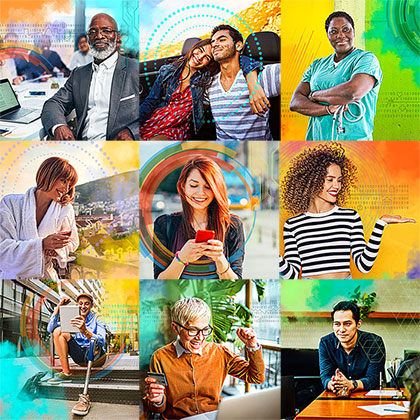At first glance, the terms multichannel and omnichannel appear interchangeable. After all, they both involve multiple channels. However, there are significant differences between these terms and recognising those differences could determine whether a business delights or disappoints its customers.
Customers expect to be able to interact with brands across multiple channels, when they want to, how they want to. And multichannel and omnichannel approaches are critical to meeting customer expectations. We’ll define both approaches, examine the key differences, and explain how to leverage both to get the best results.
What does multichannel mean?
As you likely guessed, multichannel means “many channels.” It refers to the use of more than one channel to communicate information about a brand and to interact with customers. A brand may utilise multiple channels such as voice, messaging, social media, email, print, and brick-and-mortar stores.
But each channel is not necessarily connected with the other channels. Most multichannel approaches are implemented via different systems and platforms for every single channel, versus a unified solution. For example, customer interactions over voice are not directly connected with interactions over social media or email.
What is the best way to use a multichannel approach?
A multichannel approach is most effective for reaching customers where they are to drive brand awareness. Consumers use a variety of different channels and platforms on a daily basis. To be competitive, it’s critical that businesses engage with customers and establish their presence on the channels that are most commonly used by their customers or a target audience. In a multichannel approach, businesses are focused on strategies for optimising each individual channel instead of creating a seamless experience.
What does omnichannel mean?
Like multichannel, omnichannel refers to the use of more than one channel to interact with customers. The key difference is that in an omnichannel approach, the multiple channels are connected, creating a frictionless experience for customers. A customer could start interacting with a brand on one channel and continue the interaction from a different channel.
A customer, for instance, might ring a brand’s customer support number and in an omnichannel environment, if the phone lines are busy, the company could direct customers to text their question to receive a faster response. Or if customers purchase items from a brand’s ecommerce site, they would be able to return the items at the company’s brick-and-mortar location.
What is the best way to use an omnichannel approach?
While a multichannel approach is geared toward engaging customers on multiple channels and making them aware of the brand, omnichannel is about providing a smooth and consistent customer experience. With that said, identify the parts of the customer journey where customers expect a seamless experience.
Make it easy for customers to interact with the company through multiple channels and ensure that they won’t have to repeat information each time they switch to a different channel. This means employees should be equipped with the tools and training to provide an omnichannel experience. A customer care associate, for instance, should be able to see that a customer already reached out and be able to review the interaction.
In addition, an omnichannel approach doesn’t mean that every channel should provide an identical service. Customer support channels, for instance, serve different purposes. An automated chatbot is best suited for simple, predictable questions whereas live associates are better suited for answering complex questions. However, both channels should be integrated in an omnichannel approach.
Focus on the customer
Multichannel and omnichannel approaches are both critical to running a competitive business and increasing customer loyalty. A business should be where its customers are and engage with them on customers’ preferred channels. And even a multichannel strategy should include a plan for drawing consumers further into the business.
An omnichannel experience is undoubtedly more complicated than a multichannel strategy; it requires the integration of numerous systems and platforms in addition to providing employees across the organisation with the right training, tools, and mindset in an omnichannel culture. But by understanding the key differences between multichannel and omnichannel and how to best leverage these approaches, companies can succeed in today’s fast-paced, digital-first world.
Learn more about omnichannel and multichannel approaches here
Omnichannel excellence is a marathon, not a sprint – We provide insights into customer expectations and preferences that guide your omnichannel strategy.
From siloed inefficiency to omnichannel transformation – Here’s how TTEC guided a major retailer in transforming its disparate channels into a powerful omnichannel customer support engine that enabled a small customer support team to rapidly scale.
Delivering great experiences amid the digital transformation – Leaders of TTEC, Cisco and IMI mobile discussed the role of CX in this “new normal” during a webinar.





